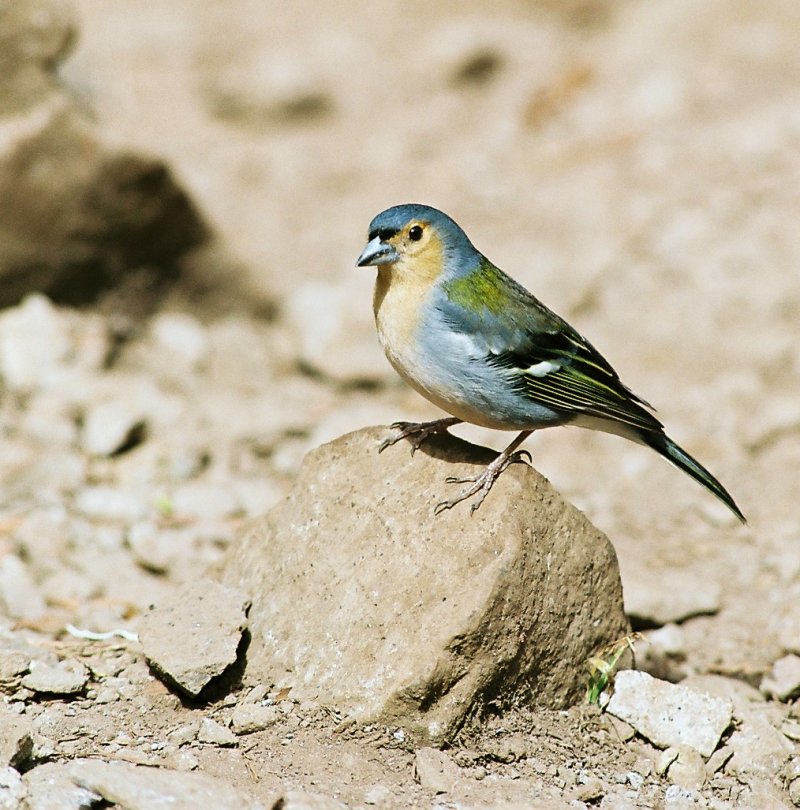|
| 질의: Chordata | 결과: 156번째/224 | |
Finch (Family: Fringillidae) - Wiki
| 제목: | Finch (Family: Fringillidae) - Wiki
| |

| 해상도: 800x810
파일크기: 141568 Bytes
촬영일: : : : :
사진기: SP-3000 (FUJI PHOTO FILM CO., LTD.)
등록시간: 2007:12:27 11:46:15
|
Finch
From Wikipedia, the free encyclopedia
Scientific classification
Kingdom: Animalia
Phylum: Chordata
Class: Aves
Order: Passeriformes
Family: Fringillidae Vigors, 1825
[Photo] Madeira Chaffinch (Fringilla coelebs madeirensis). Photo by Markus Ferch. Date 07.08.2006. Source: http://en.wikipedia.org/wiki/Image:Chaffinch_Madeira.jpg
Finches are passerine birds, often seed-eating, found chiefly in the northern hemisphere and Africa. One subfamily is endemic to the Neotropics. The family scientific name Fringillidae comes from the Latin word "fringilla", meaning chaffinch, a member of this family that is common in Europe. The taxonomic structure of the true finch family, Fringillidae, is somewhat disputed, with some including the Hawaiian honeycreepers as another subfamily (Drepanidinae) and/or uniting the cardueline and fringilline finches as tribes (Carduelini and Fringillini) in one subfamily; the euphonious finches were thought to be tanagers due to general similarity in appearance and mode of life until their real affinities were realized; the buntings and American sparrows were formerly considered another subfamily (Emberizinae). Przewalski's "Rosefinch" (Urocynchramus pylzowi) is now classified as a distinct, monotypic family with no particularly close relatives (Groth 2000).
"Classic" or true finches are small to moderately large and have strong, stubby beaks, which in some species can be quite large. All have 12 tail feathers and 9 primaries. They have a bouncing flight, alternating bouts of flapping with gliding on closed wings, and most sing well. Their nests are basket-shaped and built in trees. The true finches range in size from the Andean Siskin (Carduelis spinescens), at 9.5 cm (3.8 inches) and 8.4 g., to the Collared Grosbeak (Mycerobas affinis), at nearly 23 cm (9 inches) and 79 g. (2.8 oz).
There are many birds in other families which are often called finches. These include many species in the very similar-looking Estrildids or waxbill family, which occur in the Old World tropics and Australia. Several groups of the Emberizidae family (buntings and American sparrows) are also named as finches, including the Darwin's finches of the Galapagos islands, which provided evidence of natural selection.
Systematics
The systematics of the cardueline finches are contentious. The layout presented here follows the molecular studies of Marten & Johnson (1986) and Arnaiz-Villena et al. (1998, 2001), and takes into account the traditional splitting of the genus Carduelis. The exact position of several genera in the cardueline sequence is tentative.
Family Fringillidae
Subfamily Fringillinae - Fringilline finches; contains only four species, which feed their young on insects rather than seeds.
Genus Fringilla - Bramblings and chaffinches
Chaffinch (Fringilla coelebs)
Blue Chaffinch (Fringilla teydea)
Brambling (Fringilla montifringilla)
Subfamily Carduelinae - Cardueline finches; a much larger group that contains several genera which feed their young on seeds.
Genus Eophona - Oriental grosbeaks
Genus Mycerobas - Mycerobas Grosbeaks
Genus Pinicola - Pine grosbeak
Genus Pyrrhula - Bullfinches
Genus Leucosticte - Mountain finches
Genus N.N. - Dark-breasted Rosefinch, "Carpodacus" nipalensis (possibly belongs in Fringillinae)
Genus Carpodacus - Rosefinches (may be 2 or 3 genera; probably includes Haematospiza and possibly also Uragus)
Genus Haematospiza - Scarlet Finch
Genus Uragus - Streaked rosefinches
Genus Serinus sensu lato - Canaries, seedeaters, serins and African siskins
(Sub)Genus Serinus sensu stricto - European Serin and relatives.
(Sub)Genus Crithagra - Afrotropical Canaries, Seedeaters, Citrils etc.
Genus Carduelis sensu lato
(Sub)Genus Carduelis sensu stricto - Linnets, goldfinches, twite and cardueline siskins.
(Sub)Genus Chloris - greenfinches and desert finch
(Sub)Genus Acanthis - redpolls
(Sub)Genus Loxia - Crossbills
Genus Rhodopechys - Trumpeter Finch and relatives
Genus Coccothraustes - Hawfinch, Evening Grosbeak - polyphyletic? (Hawfinch may belong in Fringillinae).
Genus Pyrrhoplectes - Gold-naped Finch
Genus Chaunoproctus - Bonin Grosbeak (extinct)
Genus Callacanthis - Spectacled Finch
Genus Neospiza - Sao Tom?? Grosbeak
Genus Linurgus - Oriole Finch
Genus Rhynchostruthus - Golden-winged Grosbeak
Subfamily Euphoniinae - Euphonious finches; endemic to the Neotropics; formerly treated in Thraupidae.
Genus Euphonia, the euphonias
Genus Chlorophonia, the chlorophonias
More Photos at http://commons.wikimedia.org/wiki/Category:Fringillidae
http://en.wikipedia.org/wiki/Finch
| The text in this page is based on the copyrighted Wikipedia article shown in above URL. It is used under the GNU Free Documentation License. You may redistribute it, verbatim or modified, providing that you comply with the terms of the GFDL. |
|
^o^
동물그림창고 똑똑전화 누리집
^o^
|
|

